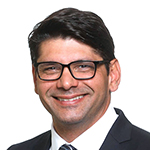Are we facing the end of active investment management?

|
Written By: Stephen Hearle |
Stephen Hearle of Nordea Asset Management UK considers the benefits and drawbacks of both active and passive approaches to investment management
Despite the growth of passive investing over recent years, the debate about active vs. passive management strategies is still going strong in asset management.
In the fixed income arena, years of extremely compressed returns have driven investors to focus more than ever on fees and commissions, leading them to favour passively-managed solutions. In equity solutions, on the other hand, life has been made easier for passive investors by strong market returns over the last decade. There has hardly been any need to fight for alpha or attempt to assess whether the possibility of enhanced returns is worth the price of an active fee because the index returns alone have been attractive. Furthermore, digitalisation, new technologies and big data are continuously improving processes and costs, which have underpinned the growth of passive solutions as they offer user-friendly and cost-effective investment products.
However, passive solutions don’t necessarily deliver happy results for investors, particularly in this market environment dominated by macroeconomic uncertainty and the threat of recession.
In such a context, a seasoned and savvy active manager could offer a better chance of generating returns. By focusing on risk balancing and control, as well as the systematic determination and exploitation of market inefficiencies, active management can optimise a portfolio to deliver higher risk-adjusted returns.
Looking across the broad range of asset classes there are several specific areas where active management can be an investor’s game changer. Here are two of them:
Active management in the fixed income universe: returns and safety with covered bonds
To achieve returns with safety sounds like quite an ambitious goal, especially in the current fixed income market conditions. This is even more the case for passively-oriented investors.
However, an experienced eye can find many attractive opportunities for alpha generation in a somewhat overlooked universe such as covered bonds.
Investing in covered bonds may look fairly straightforward at first sight – this is a huge fallacy. The covered bond market is inefficient in many ways: from new issuers that pay a premium to attract investors, to the effect of rating methodologies that do not fully capture the business model of certain issuers. Moreover, spread differences can be driven by a variety of factors such as regulatory diversity, different headline risk in the issuing banks, investors being unable – or unwilling (home bias) – to access certain jurisdictions.
The inefficiencies and complexities within this market offer a multitude of opportunities to investment teams that are truly active and dynamic in their allocation.
The covered bond market offers wide variation in relative value, with some bonds delivering considerably better performance than others with similar risk characteristics. The exposure to spread risk offers attractive possibilities, especially in the hands of experts who can add value through active management. And while past performance is never a guide to future performance, a team that has consistently generated alpha through different market conditions and has demonstrated its ability to find these sources of additional return is certainly worth looking at.
Active management in the ESG space
Sustainability unarguably constitutes a huge trend in the financial industry, and this is an area where passive solutions cannot offer a convincing case. In this landscape, active managers have an opportunity both to deliver successful performance and at the same time to bring about a positive impact.
Here, again, experience counts. Many active managers have developed Responsible Investment teams, conducting ESG research and analysis. The best teams will be well-resourced and therefore able to specialise in their industries or activities – such as engagement or analysis. An in-house team can carry out proprietary research that is able to capture nuances in a way that reliance on an external body or rating agency does not permit. It can take a more forward-looking view that highlights companies’ future potential, rather than the necessarily backward-facing ratings delivered by the external agencies (such as MSCI). And as we all know, investment management is all about where things are going rather than where they have come from.
Active management and the support of an internal RI team also enables RI activities beyond pure screening and exclusion. By definition, a passive product can do nothing more than exclude unsustainable businesses.
But is it worth it?
Active management, with its potential to outperform and its ability to structure portfolios for better risk-adjusted returns, offers a successful path through the late economic cycle and this low yield environment. Wise investors shouldn’t focus on the active-passive discussion, but rather they should strive to recognise the right partner offering the best capabilities, expertise and solutions to deliver returns.
Nordea Asset Management is the functional name of the asset management business conducted by the legal entities Nordea Investment Funds S.A. and Nordea Investment Management AB (“the Legal Entities”) and their branches, subsidiaries and representative offices. This document is intended to provide the reader with information on Nordea’s specific capabilities. This document (or any views or opinions expressed in this document) does not amount to an investment advice nor does it constitute a recommendation to invest in any financial product, investment structure or instrument, to enter into or unwind any transaction or to participate in any particular trading strategy. This document is not an offer to buy or sell, or a solicitation of an offer to buy or sell any security or instruments or to participate to any such trading strategy. Any such offering may be made only by an Offering Memorandum, or any similar contractual arrangement. This document may not be reproduced or circulated without prior permission. © The Legal Entities adherent to Nordea Asset Management and any of the Legal Entities’ branches, subsidiaries and/or representative offices.
More Related Content...
|
|
|



